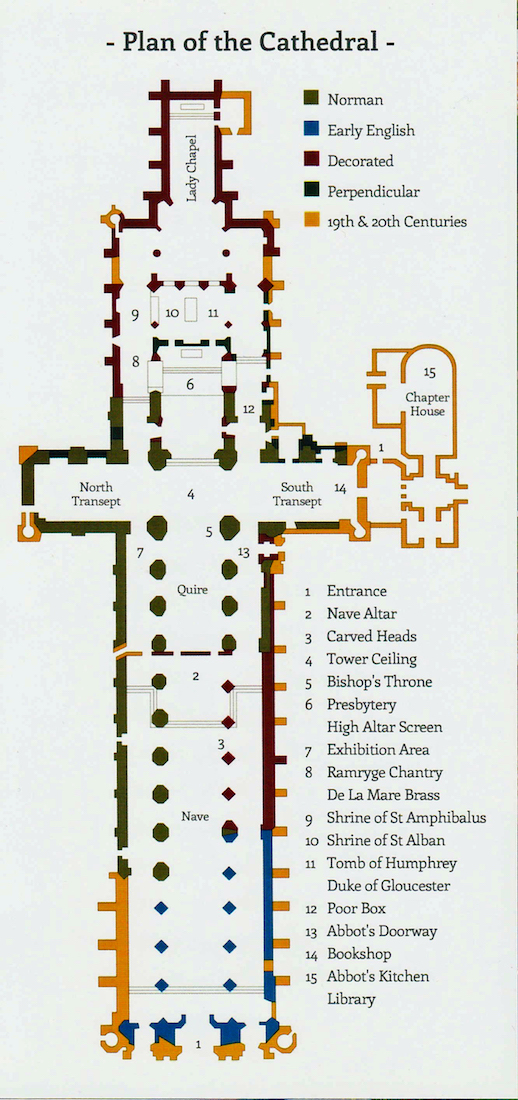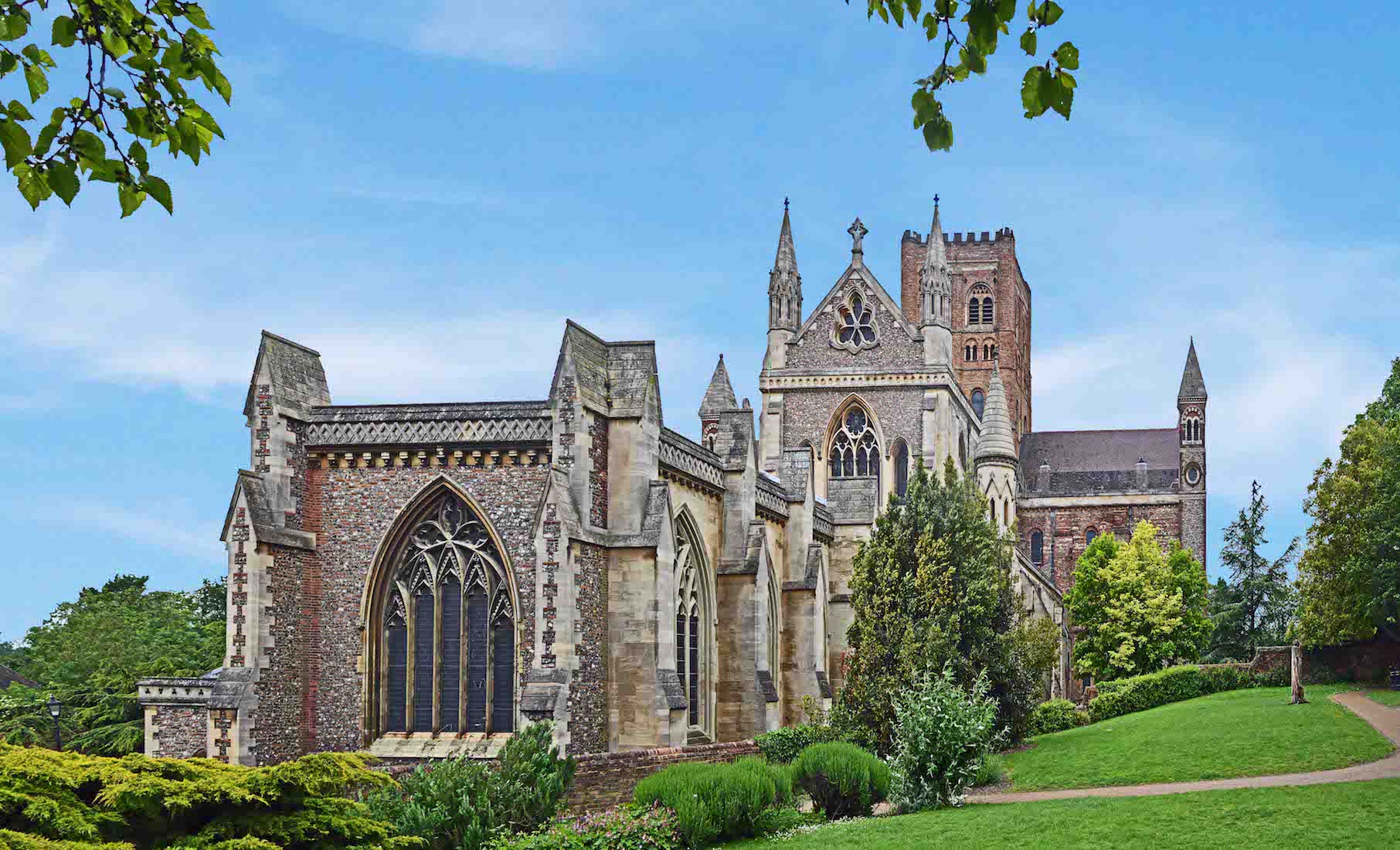ST ALBANS CATHEDRAL
HERTFORDSHIRE ENGLAND
PAUL SCOTT

In our tour, the following page numbers can be matched to the illustrated plan.
43 – 50 South Transept and Chapter House
51 – 61 South Presbytery Aisle
62 – 70 Lady Chapel and St Alban’s Shrine
71 – 80 North Presbytery Aisle
98 – 107 Presbytery (Sanctuary).
A brief history of the Cathedral is given below. However, if you want to begin your tour of the Cathedral immediately, tap / click on START . You can also access intermediate points in the tour by a tap / click on the links above.
NOTE ON MAGNIFYING IMAGES
With this website format the images are large enough for most purposes. If there is a need for greater magnification of an image, go to the identical photo on
https://www.flickr.com/photos/paulscottinfo/albums
and use Command - + (Mac) or Windows - + (Windows).
STORY OF ST ALBAN
A man called Alban, believed to have been a Romano-British citizen of the Roman town of Verulamium around the end of the 3rd century, gave shelter to an itinerant Christian priest, later called Amphibalus. Alban, impressed by what he heard from Amphibalus, was converted to Christianity by him. When a period of persecution, ordered by the Emperor, brought soldiers in search of the priest, Alban exchanged clothes with him allowing him to escape and it was Alban who was arrested in his place. Standing trial and asked to prove his loyalty by making offerings to the Roman gods, Alban bravely declared his faith in ‘the true and living God who created all things’. This statement condemned Alban to death. He was led out of the city, across the river and up a hillside where he was beheaded. As with all good stories the legend grew with time. Bede, writing in the 8th century elaborates the story, adding that the river miraculously divided to let him pass and a spring of water appeared to provide a drink for the saint. He also adds that the executioner’s eyes dropped out as he beheaded the saint, a detail that has often been depicted with relish since. At the time of Bede there was a church and shrine near the spot, pilgrims travelled to visit, and it became an established place of healing. He describes the hill as ‘adorned with wild flowers of every kind’ and as a spot ‘whose natural beauty had long fitted it as a place to be hallowed by the blood of a blessed martyr’.
HISTORY
[Wikipedia]
St Albans Cathedral, officially the Cathedral and Abbey Church of St Alban, but often referred to locally as ‘the Abbey’, is a Church of England cathedral in St Albans, England. Much of its architecture dates from Norman times. It ceased to be an abbey following its dissolution in the 16th century and became a cathedral in 1877. Although legally a cathedral church, it differs in certain particulars from most other cathedrals in England: it is also used as a parish church, of which the dean is rector with the same powers, responsibilities and duties as that of any other parish. At 85 metres long, it has the longest nave of any cathedral in England. Probably founded in the 8th century, the present building is Norman or Romanesque architecture of the 11th century, with Gothic and 19th-century additions.
A longer and more detailed history of the Cathedral can be found at
https://en.wikipedia.org/wiki/St_Albans_Cathedral



